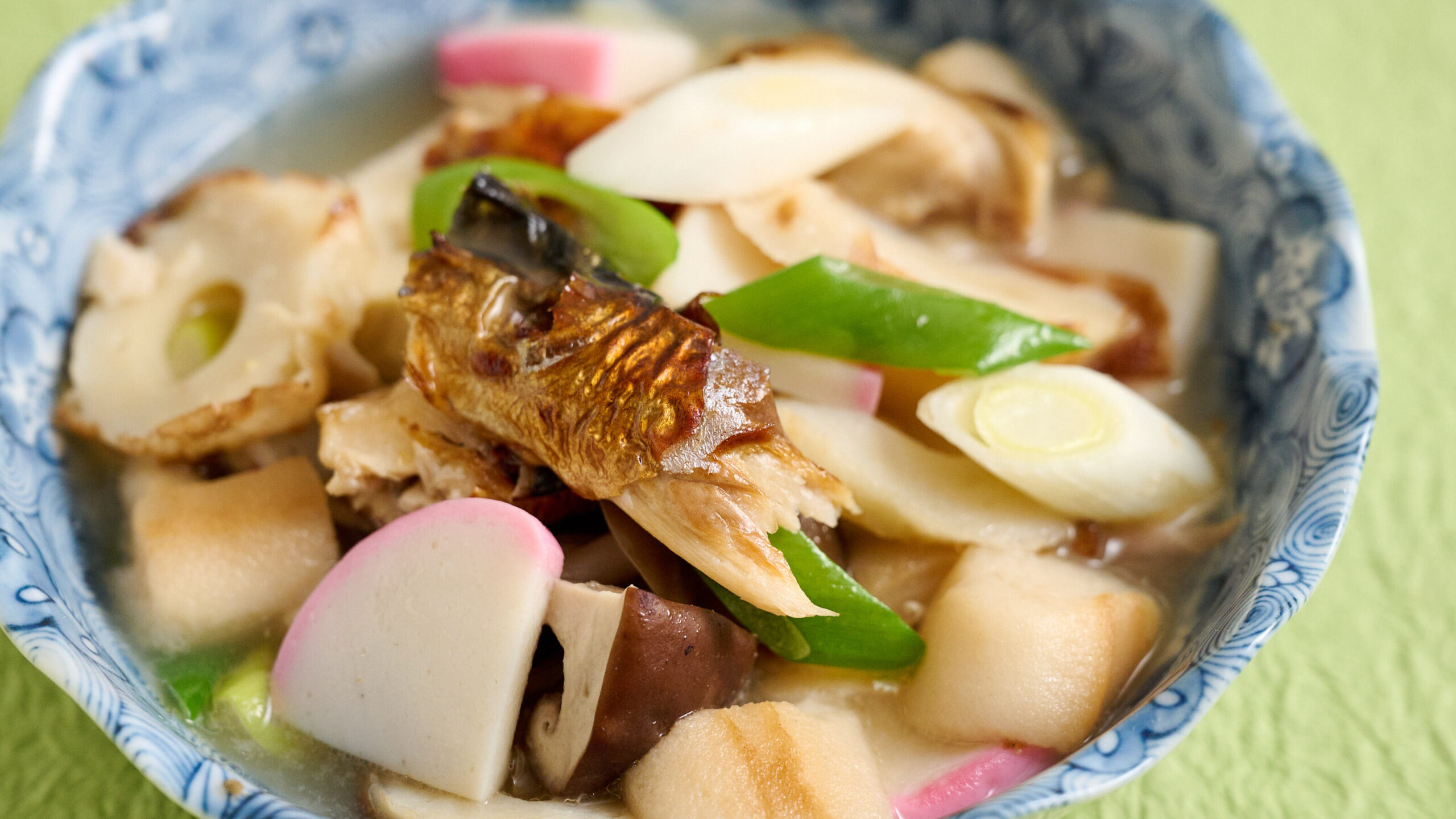
Alright, let’s explore a fascinating dish from Fukui Prefecture: “Namagusa-jiru.” Now, the name might sound a bit intimidating – “namagusa” hints at a raw or fishy smell – but don’t let that fool you! This is a flavorful and comforting soup with a rich history, especially in the Obama City area. Let’s dive in and discover the truth behind the name!
Dish Name: Namagusa-jiru
- Region / Location: Obama City, Shinbo district, Fukui Prefecture.
- Primary Area of Tradition: Shinbo district, Obama City.
- Main Ingredients: Grilled mackerel, wheat gluten (fu), tofu, chikuwa (fish cake), shiitake mushrooms, shimeji mushrooms, kamaboko (fish cake), green onions.
How It’s Eaten / Served
Namagusa-jiru is prepared by making a broth from the head and bones of grilled mackerel. Then, ingredients like mushrooms, chikuwa, and tofu are added, followed by flaked mackerel meat. Finally, it’s finished with a generous amount of green onions. It’s a hearty dish, packed with ingredients, making it almost more of a stew than a soup!
Cultural Background and Preservation
Obama City, a central hub in Wakasa Bay, was the starting point of the “Mackerel Road,” where fish was carried on foot to Kyoto. Historically, from the Asuka and Nara periods, Obama was known as “Miketsukuni” (land providing food for the Emperor), playing a vital role in supplying food to the imperial court. Among the six settlements in the Miyagawa area, the Shinbo region, with Shinbo Yamashiro (Kasumi-ga-jo) Castle, had relatively easy access to ingredients from the mountains. Thanks to this, the unique traditional dish “Namagusa-jiru” was created and passed down only in this area.
Namagusa-jiru is made with grilled mackerel and features a slightly sweet, clear broth. Despite its name, it doesn’t have a fishy smell at all. Historically, it was an essential dish for “Shojin-ake” (the end of a period of abstinence from meat and alcohol) and celebrations. Even today, Wakasa Bay’s seafood is highly valued throughout Japan as “Wakasa-mono.”
Even now, some families still make Namagusa-jiru for celebrations like house-building ceremonies and memorial services.
Fukui Prefecture has been promoting traditional foods like Namagusa-jiru to the Tokyo metropolitan area through “Fukui Food Culture Classes” (from 2017 to 2019).
In Obama City, the “Miketsukuni Wakasa Obama Food Culture Museum” was renovated and reopened on March 14, 2015. Namagusa-jiru is displayed as a local dish in the museum and is a popular item on the cooking experience menu in the kitchen studio.
Additional information:
- Miketsukuni (御食国): A historical term for a region that supplied food to the imperial court.
- Saba Kaido (鯖街道): The “Mackerel Road,” a route used to transport fish from Wakasa Bay to Kyoto.
- Shojin-ake (精進明け): The end of a period of abstinence from meat and alcohol.
- Fu (麩): Wheat gluten, a common ingredient in Japanese cooking.
- Chikuwa (ちくわ): A tube-shaped fish cake.
- Kamaboko (蒲鉾): A type of cured fish cake.
The information about regional cuisine featured on this website (Piggy's Grandma of Japan) is summarized and adapted from the Ministry of Agriculture, Forestry and Fisheries of Japan (MAFF) website, "Our Regional Cuisines"Additional commentary is provided based on the unique experiences and perspectives of the site's editors.
The copyright for the original content regarding regional cuisine belongs to the Ministry of Agriculture, Forestry and Fisheries of Japan.
The summaries and adaptations published on this site are intended for informational purposes only. Piggy's Grandma of Japan does not guarantee the accuracy or completeness of this information. For the most accurate and complete details, please refer to the original pages on the MAFF website.


